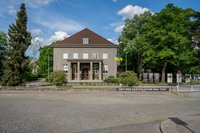Die SIS 3 und SIS 2 waren Kanonen, die in der Roten Armee massenweise zum Einsatz kamen. Ihr militärischer Wert bestand darin, dass sie aufgrund ihres geringen Gewichts leicht zu bewegen waren und mit bis zu 25 Schuss pro Minute eine hohe Feuerkraft entwickelten. Ihre Konstruktion folgte einem einfachen Baukastenprinzip. Beide Kanonen konnten schnell und kostengünstig hergestellt und repariert werden. Die kleinere SIS 2 wurde vorwiegend als Panzerabwehrkanone eingesetzt.
en









